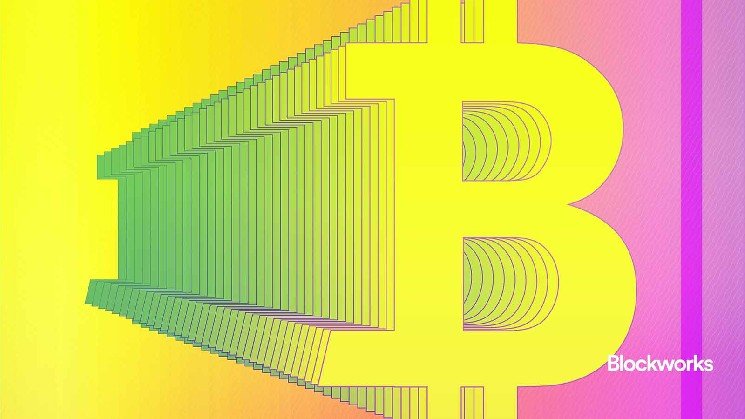This is a segment from the 0xResearch newsletter. To read full editions, subscribe.
Michael Egorov is no stranger to token incentive mechanisms. As the founder of Curve, he pioneered vote-escrow (ve) tokenomics to juice the growth of the stablecoin AMM. But his new protocol, Yield Basis, is built for a different kind of user: “people who want to earn something on mostly Bitcoin,” as Egorov told Blockworks.
At its core, Yield Basis is an attempt to eliminate LP impermanent loss by leveraging liquidity. Egorov explains: “If you leverage liquidity by a factor of two and keep this leverage, then the pricing of liquidity which gives you impermanent loss actually disappears.” The result, he says, is LP positions that behave like spot BTC exposure — with none of the usual downside when prices move violently.
The mechanism builds on Curve’s liquidity pools, but with key upgrades. Egorov has engineered the system to “re-leverage” automatically, keeping the 2x ratio constant. “It’s very important to keep this ratio very, very precise,” he said, noting that “a special AMM will do it for you.”
That precision, he argues, is what distinguishes Yield Basis from Fluid. “From what I understand, [Fluid is] doing it rather manually,” he said. “They’re earning a lot in fees, but they are losing more when this process of moving the range happens.” With Yield Basis, by contrast, the rebalancing logic is automated and driven by arbitrage, preserving capital value in BTC terms. “You want your number of bitcoin to smoothly go up rather than ever go down.”
Of course, there are new protocol tokens involved. And the tokenomics design is no less ambitious. LPs must choose: Either earn real BTC-denominated yield from trading fees, or forgo that income in exchange for emissions of the protocol’s first native token, $YB. “We only distribute real revenues to liquidity providers who did not choose to earn YB inflation,” Egorov said.
That dynamic turns YB emissions into something closer to mining than farming. “Every single $YB token has an intrinsic cost of being mined,” wrote researcher Vasily Sumanov in a recent X article. “Users efficiently buy $YB from the protocol at a certain price (or bear a certain cost to obtain them).”
The token’s utility follows a familiar Curve model. YB can be locked into veYB to direct emissions and capture BTC yield, launching what some are already calling Curve Wars 2.0. “When bootstrapping a new project, it’s actually good to have a new token,” Egorov said — and there is expected to be one for each chain deployment with “its own governance on every chain.”
That decision, which is likely to raise some eyebrows, is driven partly by a desire to remove any need for bridging, and partly because “having one token per chain can open good business opportunities to align with local ecosystems in non-ETH chains,” Egorov said.
Despite being a standalone protocol, Egorov insists Curve also stands to benefit. “10% of the fully diluted YB token distribution will go toward Curve,” he said. Plus, Curve’s collateralized stablecoin, crvUSD, is central to the architecture. “These YB tokens can be used to buy votes for crvUSD liquidity…that’s revenues for the DAO if you count vote incentives as revenues.”
The Curve DAO directly funds Egorov’s company, Swiss Stake AG. Aave founder Stani Kulechov recently received pushback from Aave token holders about his plans to launch a new protocol under similar terms.
Yield Basis quietly raised $5 million in February, and is not yet live. It will launch first on Ethereum mainnet. When? “Once I’m sure the code is safe and ready,” Egorov said. “I want to see it performing in real life.”
Read the full article here
